Regression
Machine Learning with PySpark

Andrew Collier
Data Scientist, Fathom Data
Consumption versus mass: scatter
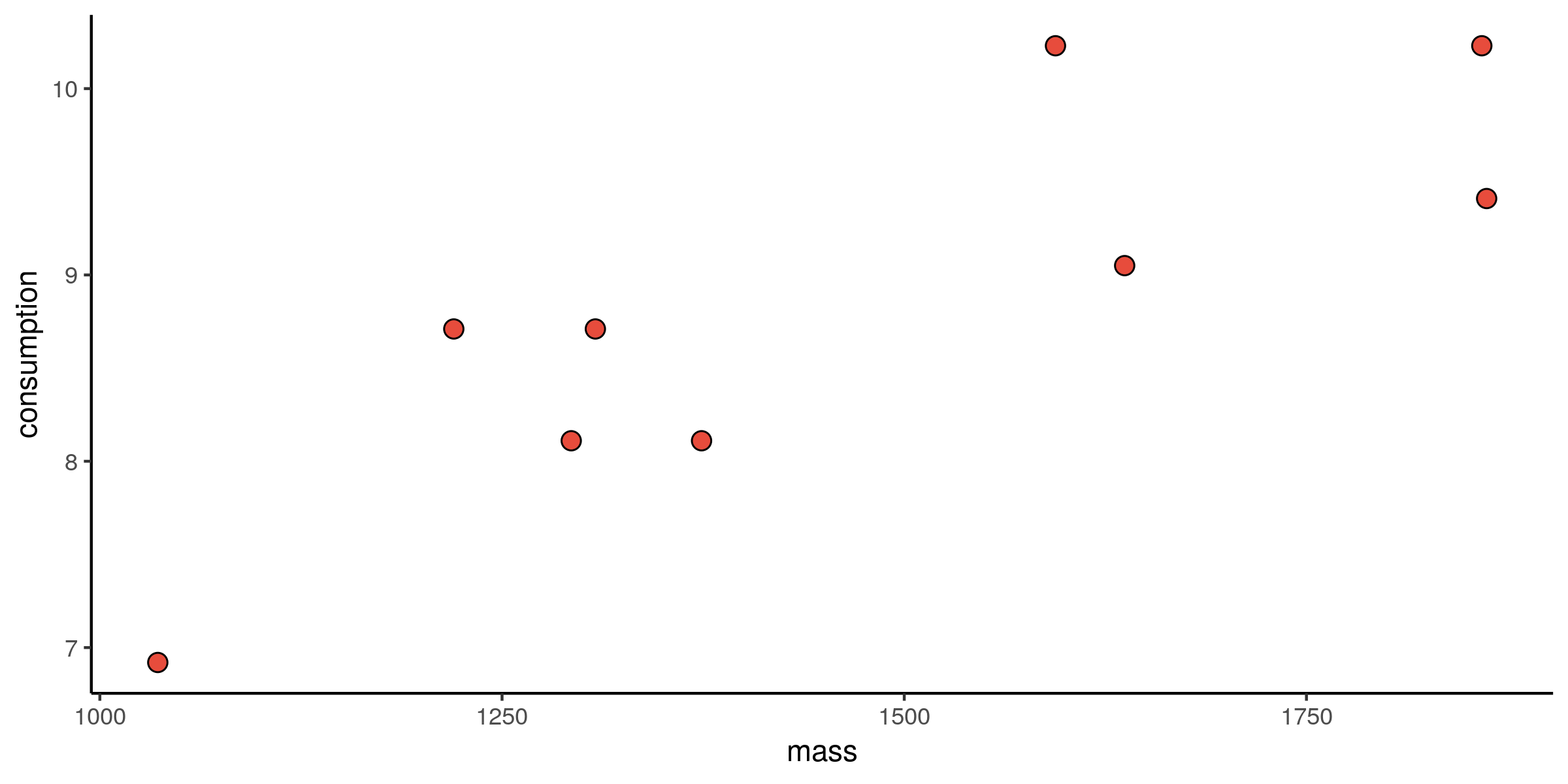
Consumption versus mass: fit
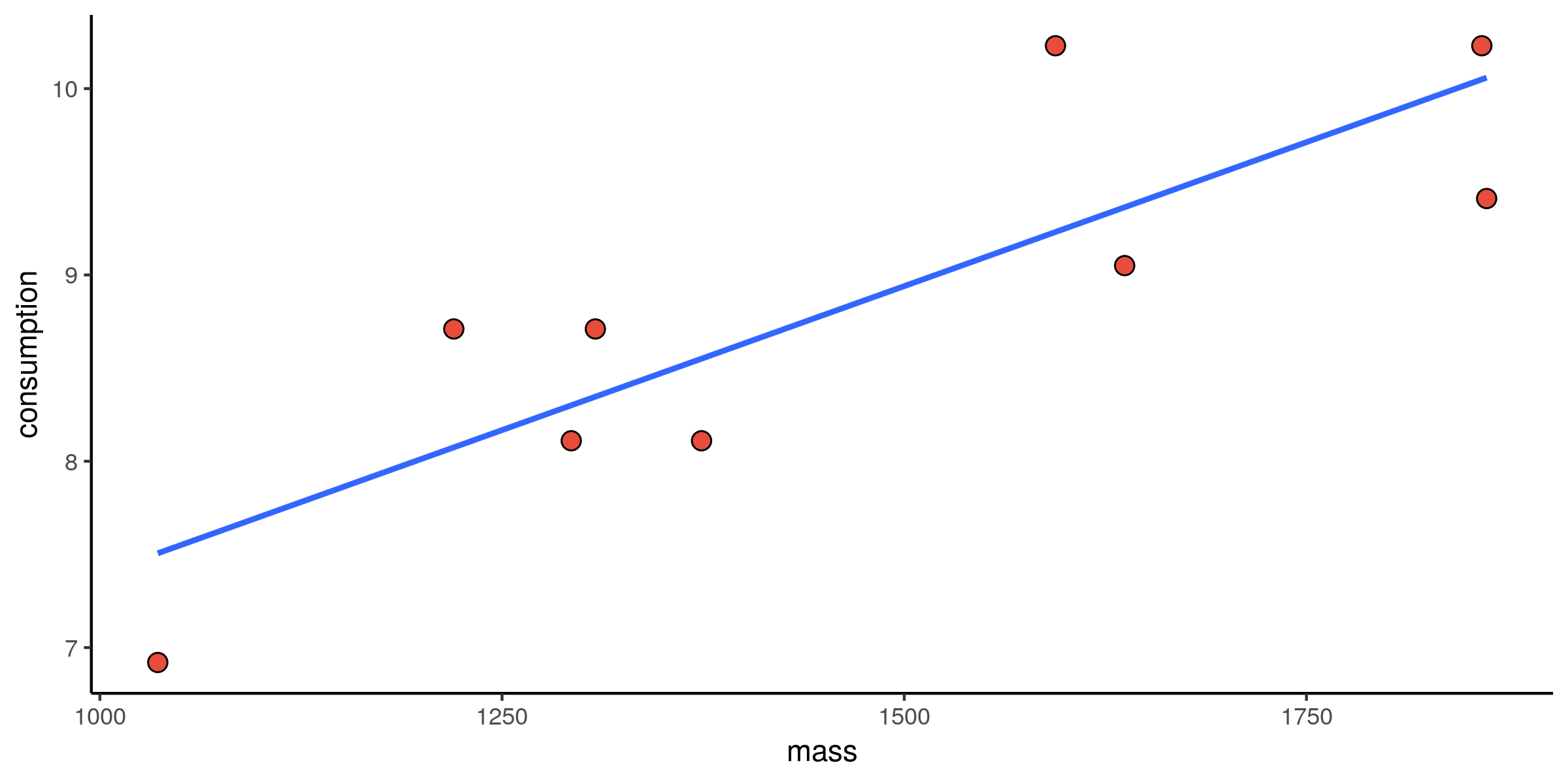
Consumption versus mass: alternative fits
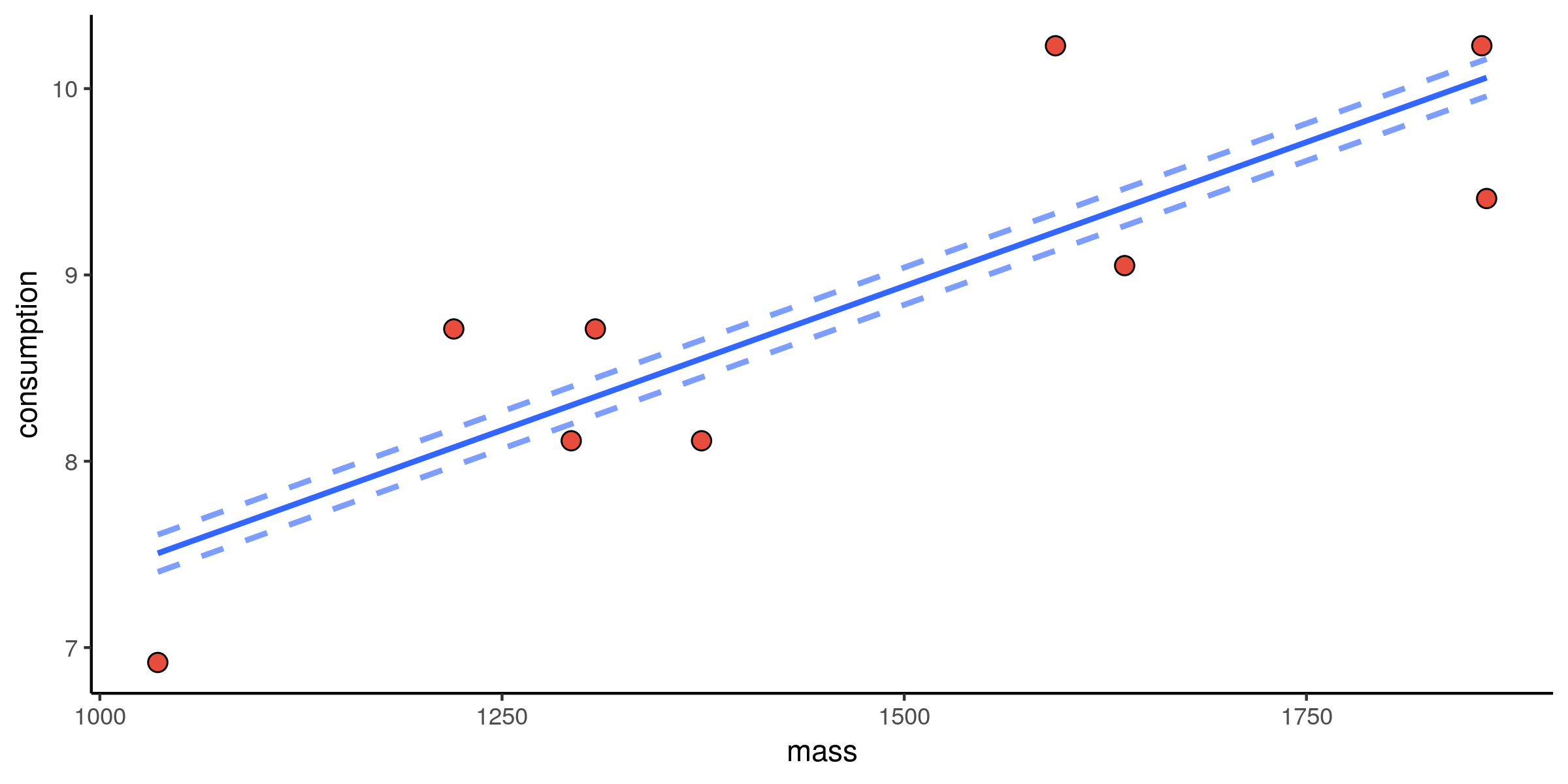
Consumption versus mass: residuals
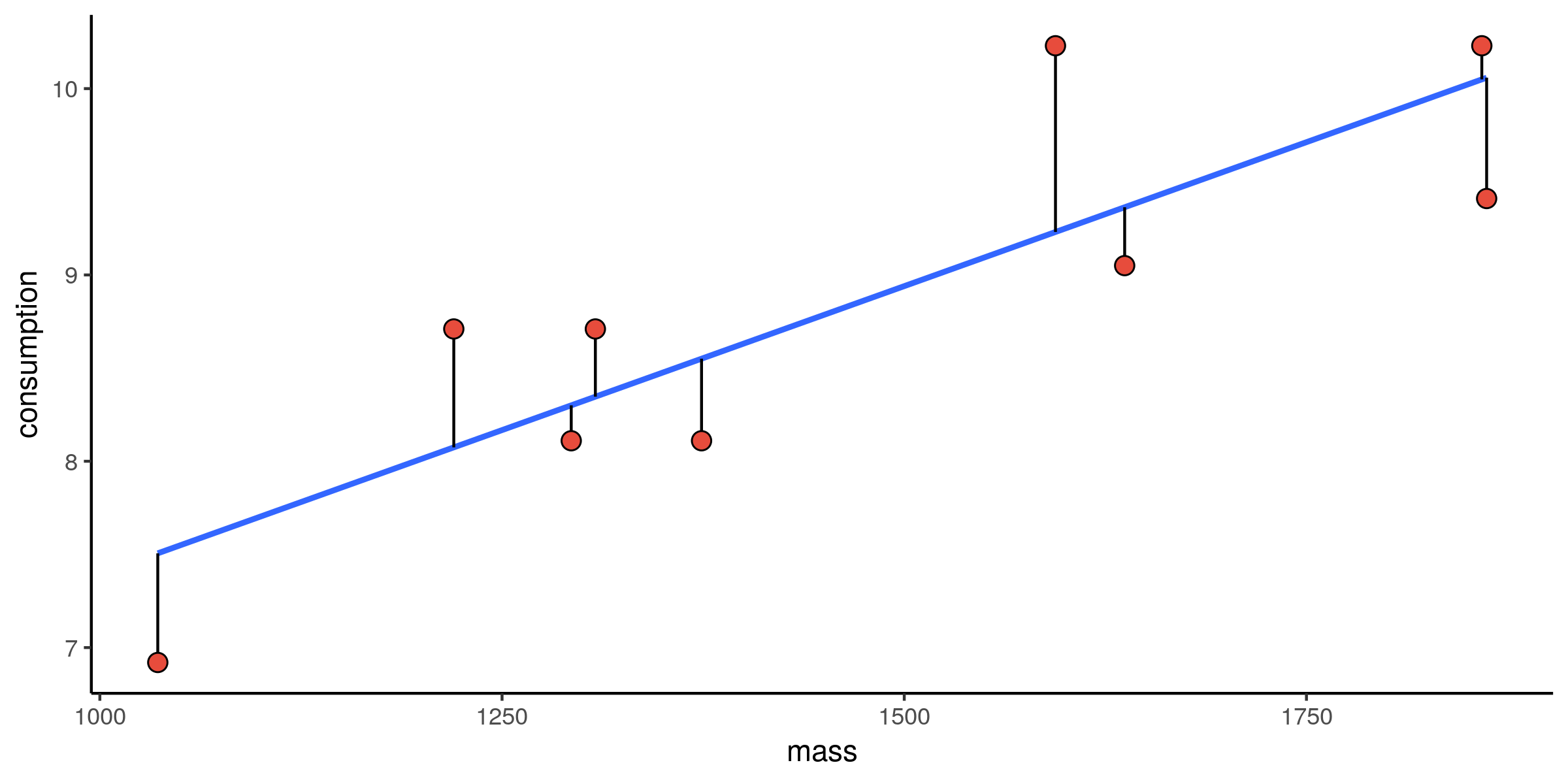
Loss function

MSE = "Mean Squared Error"
Loss function: Observed values

$y_i$ — observed values
Loss function: Model values

$y_i$ — observed values
$\hat{y_i}$ — model values
Loss function: Mean

$y_i$ — observed values
$\hat{y_i}$ — model values
Assemble predictors
Predict consumption using mass, cyl and type_dummy.
Consolidate predictors into a single column.
+------+---+-------------+----------------------------+-----------+
|mass |cyl|type_dummy |features |consumption|
+------+---+-------------+----------------------------+-----------+
|1451.0|6 |(5,[0],[1.0])|(7,[0,1,2],[1451.0,6.0,1.0])|9.05 |
|1129.0|4 |(5,[2],[1.0])|(7,[0,1,4],[1129.0,4.0,1.0])|6.53 |
|1399.0|4 |(5,[2],[1.0])|(7,[0,1,4],[1399.0,4.0,1.0])|7.84 |
|1147.0|4 |(5,[1],[1.0])|(7,[0,1,3],[1147.0,4.0,1.0])|7.84 |
|1111.0|4 |(5,[3],[1.0])|(7,[0,1,5],[1111.0,4.0,1.0])|9.05 |
+------+---+-------------+----------------------------+-----------+
Build regression model
from pyspark.ml.regression import LinearRegression
regression = LinearRegression(labelCol='consumption')
Fit to cars_train (training data).
regression = regression.fit(cars_train)
Predict on cars_test (testing data).
predictions = regression.transform(cars_test)
Examine predictions
+-----------+------------------+
|consumption|prediction |
+-----------+------------------+
|7.84 |8.92699470743403 |
|9.41 |9.379295891451353 |
|8.11 |7.23487264538364 |
|9.05 |9.409860194333735 |
|7.84 |7.059190923328711 |
|7.84 |7.785909738591766 |
|7.59 |8.129959405168547 |
|5.11 |6.836843743852942 |
|8.11 |7.17173702652015 |
+-----------+------------------+
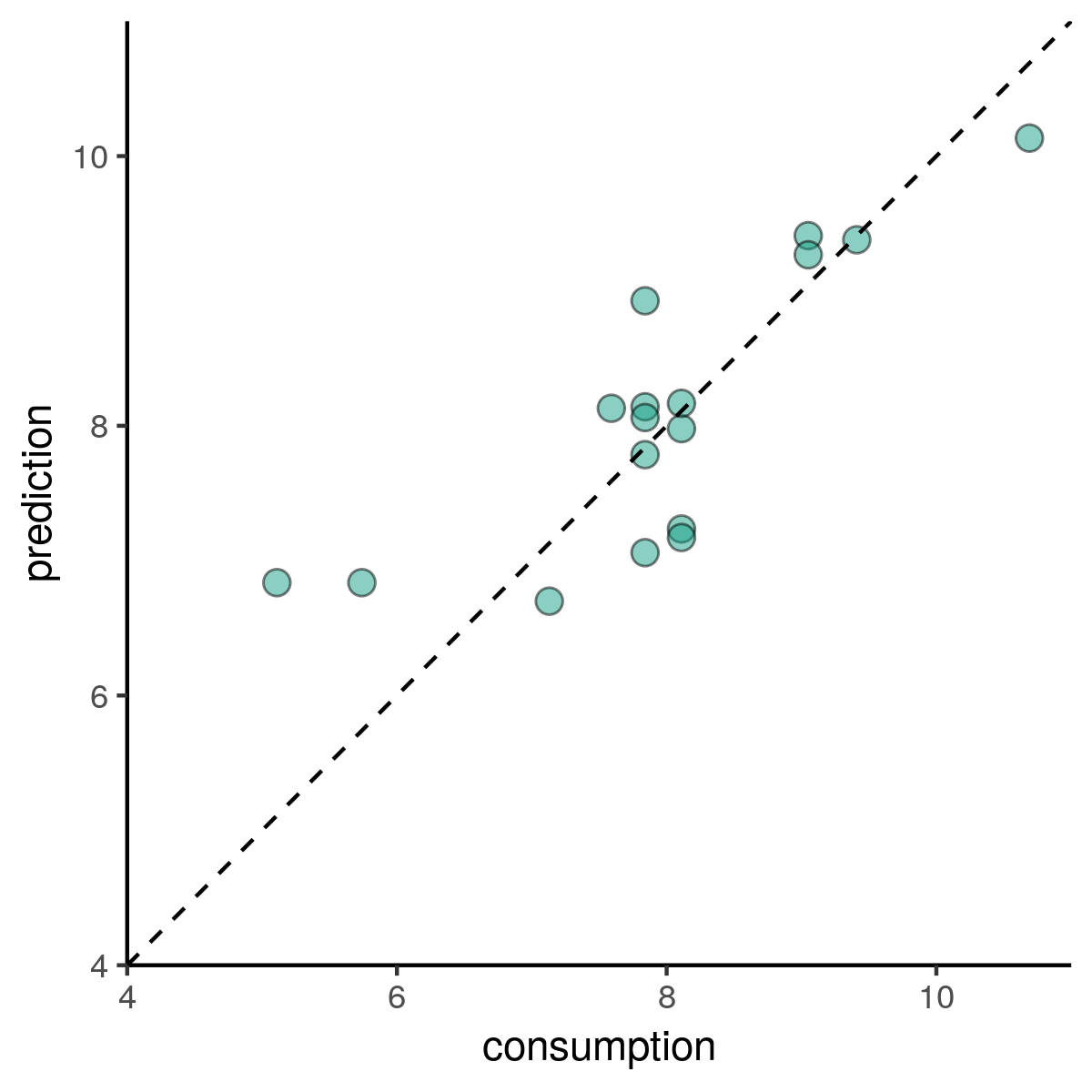
Calculate RMSE
from pyspark.ml.evaluation import RegressionEvaluator
# Find RMSE (Root Mean Squared Error)
RegressionEvaluator(labelCol='consumption').evaluate(predictions)
0.708699086182001
A RegressionEvaluator can also calculate the following metrics:
mae(Mean Absolute Error)r2($R^2$)mse(Mean Squared Error).
Consumption versus mass: intercept
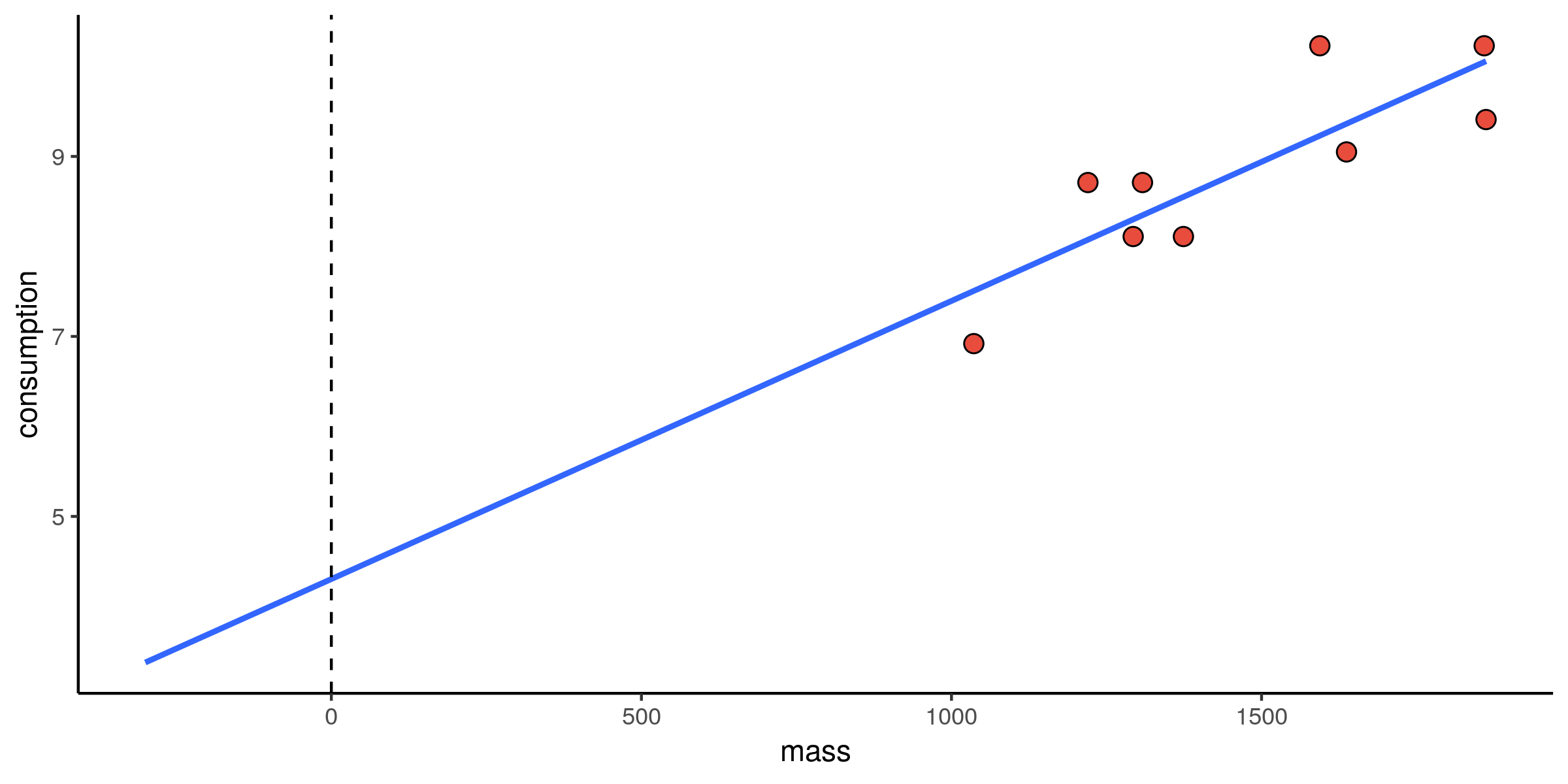
Examine intercept
regression.intercept
4.9450616833727095
This is the fuel consumption in the (hypothetical) case that:
mass= 0cyl= 0 and- vehicle type is 'Van'.
Consumption versus mass: slope
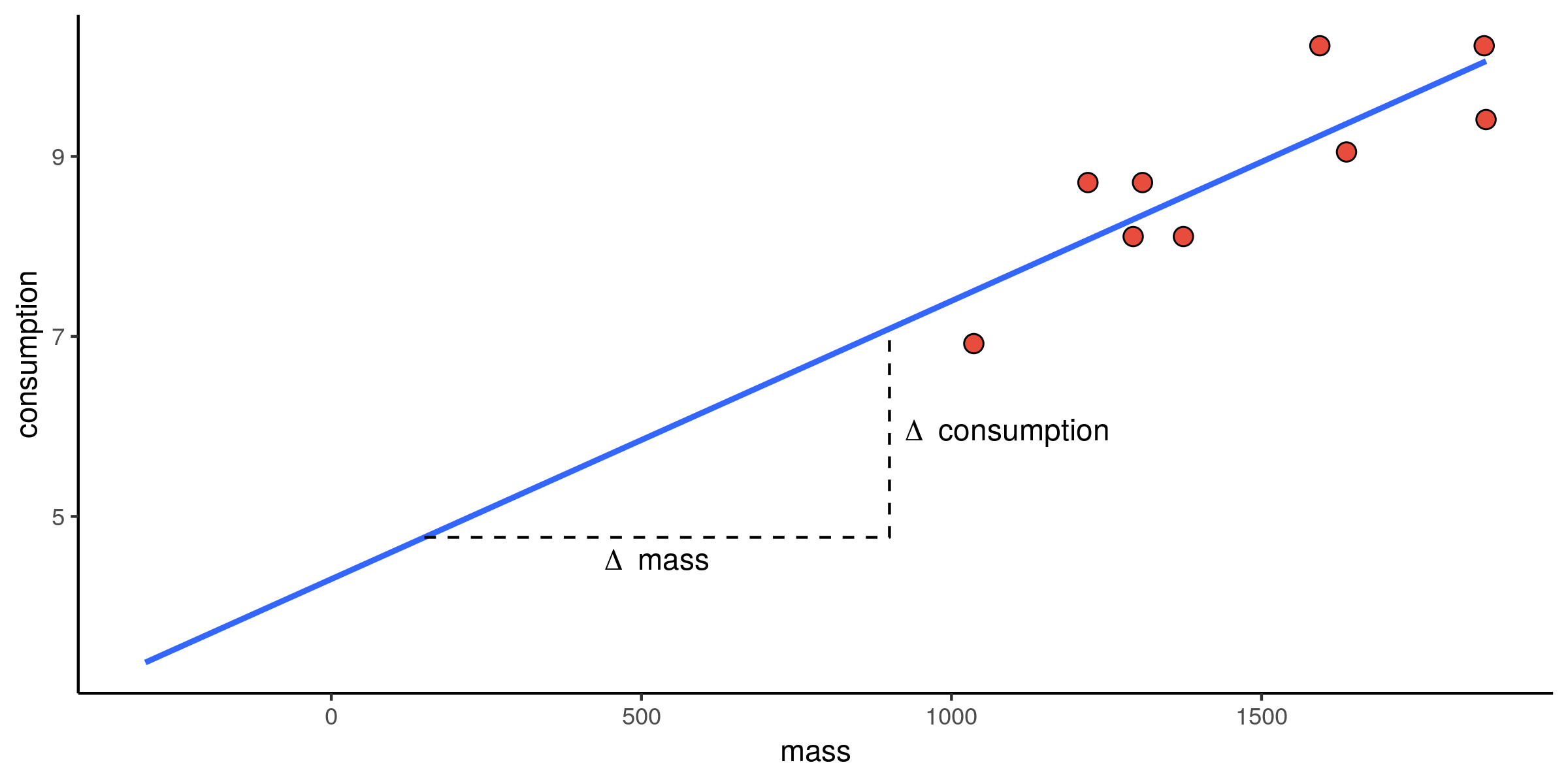
Examine Coefficients
regression.coefficients
DenseVector([0.0027, 0.1897, -1.309, -1.7933, -1.3594, -1.2917, -1.9693])
mass 0.0027
cyl 0.1897
Midsize -1.3090
Small -1.7933
Compact -1.3594
Sporty -1.2917
Large -1.9693
Regression for numeric predictions
Machine Learning with PySpark

